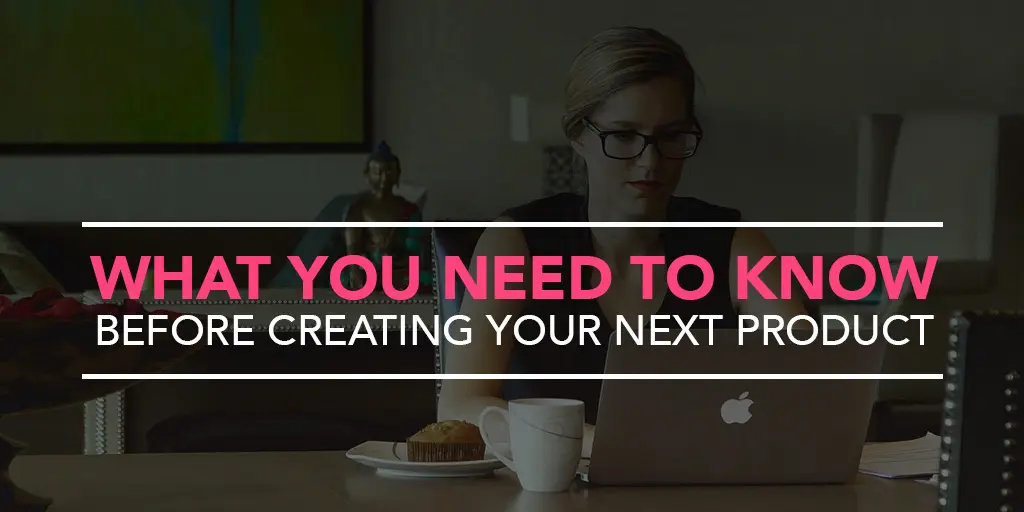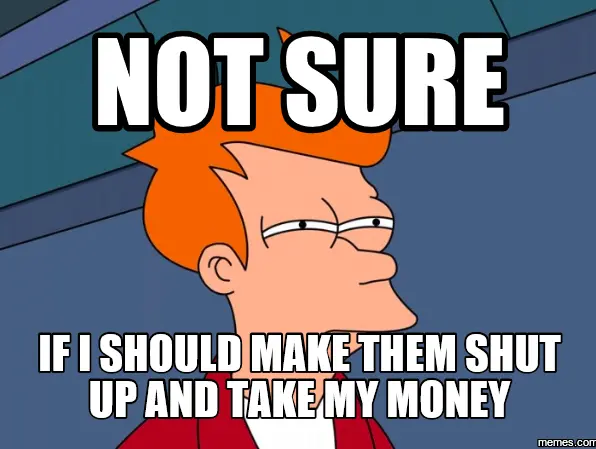
Forget about puberty, creating a product is one of the most challenging times in a person’s life. Coming up with an idea for a product is scary. The moment you move forward with creating a product, you’re immediately bombarded with What Ifs, such as:
What if no one finds out about my product?
What if no one cares about my product?
What if my market is oversaturated with similar products?
What if I charge too much?
What if I don’t charge enough?
What if fail?
What if I succeed?
And that’s just a brief rundown. There are a lot more What Ifs where those came from.

Here are the only three questions you need to answer when creating a product: Click To Tweet
Instead of trying to satisfy all of those nagging questions, the only three you really need to answer are:
If you can thoroughly answer those three questions, you will answer all the rest.
Here’s a list of 10 questions to ask yourself before creating your next product.
Coming Up with the Perfect Idea

As I hinted to above, there are three questions that will help you figure out the right idea for your product. Let’s address each one now.
Who is my customer?
I cringe when people say, “everyone’s my customer” because that’s simply not true. While you may appeal to a broad base, that doesn’t mean that you’re appealing to everyone on earth. Some people will hate your brand for no logical reason, and that’s okay. You’re only focused on the relatively small group of people who will appreciate your product and tell their like-minded friends about you.
Whether you already have an audience or you’re building from scratch, you should have a clear understanding of who you’d like to reach. Keep in mind that this customer avatar may change as you continue developing and refining your product.
I also want to point out that understanding your customer is obviously not the first step. You can’t find your customer without finding your idea first. The reason I list this question as first is because it’s the most important one to keep in mind.
What does my customer need?

This question is closely tied to customer identification.
Find your customers’ pain. And pain is not just something that they want, it’s something that they need. It’s the thing that keeps them up at night.
If you can pinpoint this need, you’ve got a customer.
Whether you’re selling a pillow, a vacation or a dog walking service– it’s all about pinpointing the need that the customer has (i.e., I need a pillow that improves my sleeping posture, I need to get away from the hustle for a few days, I need someone to walk Fido).
Identify the need, not the “nice to have”, and then craft a message around that need. Use this to build the foundation of your product and also to write the description on your product’s landing page. Here are a few more copywriting pointers.
There are a lot of creative ways to find your customer’s needs. Here’s a starter list:
- Do a Google search
-
Do keyword research – use a tool like Google Ad Planner or Google Trends to find out what’s gaining steam or dying down.
-
Search on social media platforms
- Monitor social media
When you’re searching, look for products that are similar to the one you’d like to create, and find out what people are saying about those products. Is there a gap in the market that you can fill? What’s the common complaint that people have with the products currently on the market?
How can I help my customer get what they need?
Here’s where the stars align. In addition to understanding your customer and understanding what they need, you’ve got to find the answer to their problem– something that you can actually create, no problem. So, that begs the question:
What are you good at?
What can you do that offers value to your prospective customer? Don’t overthink it. Come up with simple solutions that you monetize.
Create a Lead Magnet and Then Do This:
My favorite strategy for this comes from Sean McCabe in his fantastic 7 part video series on Launching a Product. It’s thus:
Create a lead magnet and upon delivery, simply ask a question on your delivery email that will drive your product creation. Ask them to identify their number one struggle with [fill in the blank].
Now, sit back and be patient. As more people download your lead magnet, you’ll receive responses to your question.
Additionally, you can create a contest to build interest in your product; for example, host a giveaway for your product. By doing so, you’ll then have qualified leads (and their email addresses plus permission to market to them). This means that when you launch your product, you already have a pool of prospective buyers.
Moving Beyond the “If”
It’s one thing to get the “Sure, I’d buy that product if it was available” stamp of approval, but that’s not enough. While this stamp of approval is a definite ego booster, it’s still stuck in theory. And, to be quite frank, it’s a lot easier for your prospects to say they’ll buy than to actually do it.
To be successful, you need to move the prospects from validating your idea and into the “Sign me up right now, here’s my money” stage, and you’ll find that’s not as easy to come by.
That’s because surrounding your new product is a crowd of What Ifs. Yup, those darn What Ifs are always busy. What Ifs are plaguing your prospective customer, and it’s your job to tamp down the noise.

Here’s how to compel people to purchase your product:
Show them that it works. Use videos or other visuals to show how your product works, and/or to discuss why it will be an invaluable resource to your prospective customer.
Show them that others use it. Social proof often guarantees sales. Show them that other people tried it, liked it, and resolved their problem.
Make it easy for them to say yes. Use your product’s landing page to address and quiet all of the What Ifs that may prevent the prospect from buying.
Accepting Pre-orders
One guaranteed way to validate your product idea is by simply taking orders for it. That’s right– before it’s ready, start accepting pre-orders for it.
So what if you haven’t created it yet? You don’t have to. Isn’t that the lesson to be learned from Kickstarter et al.?
Forget “if you build it, they will come.” You don’t even need to build it for people to come. You just need to have an idea (and a clear articulation of that idea).
With the help of a killer landing page, you can then get people excited about your idea before it’s even in production. And, you can also get that money.
It’s a brilliant idea, right? I can’t take credit for this one. It’s actually from Corey Ferreira of Embolden.co. Check out his video. In it, he discusses how you should create the sales page first to find interest for your product, and then do a reverse build.
Here are a few of the reasons why pre-orders rock:
Pre-orders help you better predict the future sales of your product. If there’s one person willing to buy from you, it’s highly likely that there are more.
Each pre-order is a guarantee that you’ll make money for your product. You know that you’ve at least made X amount of money on your product.
Pre-orders give you incredible insight on your customers. You can turn around and use this sample list of customers to target similar, lookalike customers.
Paying for Promotion
In our recent marketing chat with Chris Lacey at Choco Rush, we discussed how to validate your idea for as little as $20 a day. (You can check out that video here.) The moral of the story is that Facebook makes it easy to get in front of the right customers, even if you have a teeny tiny budget that could.
In addition to paid ads, Chris also advocates influencer marketing. You want to find the people who are naturally connected to your brand and get them to promote your upcoming product. By the way, if you’re a beginner to influencer marketing, you’ve got to read this post: How to get Started with Influencer Marketing.
A Word of Encouragement
When you’re surrounded by What Ifs, I want you to remember this: someone sold a pet rock before. A rock… as a pet.

Sure, it was a gag joke, but the point is that there’s a market for everything, right? So, let me encourage you by saying that no matter what product you’re thinking of creating, there’s someone out there who’s will buy it. The biggest obstacle is finding that person and then convincing them to give your product a shot.